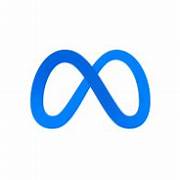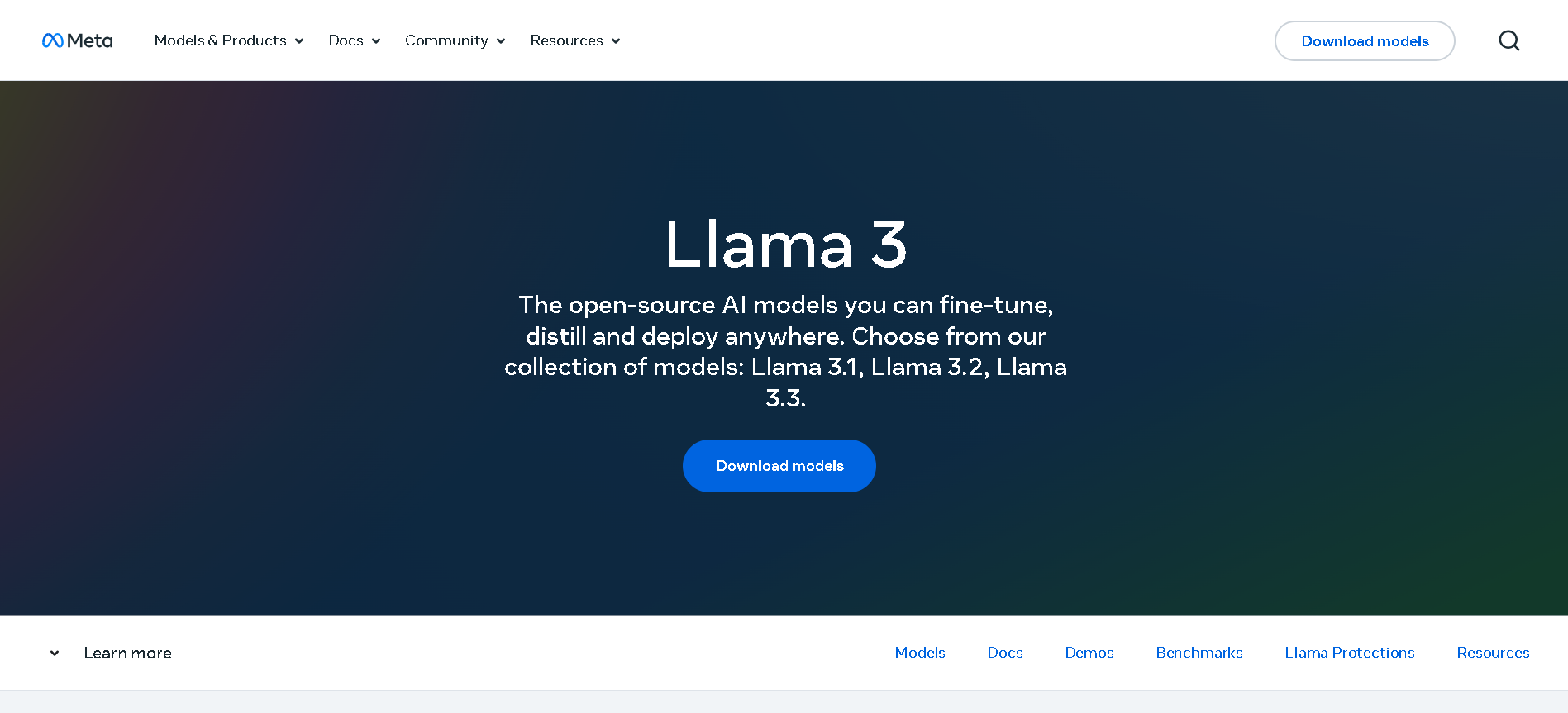
- Mobile & Edge Developers: 1B and 3B variants run locally on smartphones or IoT devices—even ARM-based chips.
- AI Developers & Enterprises: 11B/90B Vision models support image tasks like charts, OCR, and document analysis.
- Researchers & Tool Builders: Use text-only or vision models with long-context input for summarization, retrieval, or reasoning.
- Educators & Multilingual Applications: Multilingual text and vision assist in education, translation, and interactive learning.
- Open-Source Advocates: All sizes available under the Llama 3.2 community license, ensuring open deployment and fine-tuning opportunities.
How to Use Llama 3.2?
- Select Model: Choose 1B/3B for text-only tasks on-device; 11B/90B Vision via API/cloud.
- Deploy on Edge or Cloud: Use Hugging Face, AWS Bedrock, IBM watsonx.ai, or mobile runtimes.
- Send Prompts: Provide up to 128K tokens per prompt—texts or mixed media for Vision models.
- Perform Tasks: Summarization, visual Q&A, chart interpretation, code generation, multilingual chat, etc.
- Optimize for Efficiency: Edge variants designed for privacy and speed, while Vision models use GQA and efficient GPU inference.
- Edge-Ready Text Models: 1B/3B run locally with low latency and minimal resource use.
- First Open Multimodal: 11B/90B Vision models rival closed-source systems in chart and diagram understanding.
- Huge Context Window: 128K-token support enables long document and code workflows.
- Efficient Inference: GQA boosts speed, making even Vision models practical at scale.
- Open-Source & Commercial Flexibility: Community license supports widespread adoption and customization.
- Edge-capable text models improve privacy and responsiveness
- Vision support in 11B/90B boosts chart, OCR, and visual Q&A tasks
- Massive 128K context enables rich, long-form understanding
- Open-source licensing ensures flexibility and broad usage
- Offerings across device, cloud, and API ecosystems
- Vision variants require heavier hardware for deployment
- 128K context still falls short of multimillion‑token needs
- Smaller models underperform flagship LLMs in top-tier benchmarks
Proud of the love you're getting? Show off your AI Toolbook reviews—then invite more fans to share the love and build your credibility.
Add an AI Toolbook badge to your site—an easy way to drive followers, showcase updates, and collect reviews. It's like a mini 24/7 billboard for your AI.
Reviews
Rating Distribution
Average score
Popular Mention
FAQs
Similar AI Tools
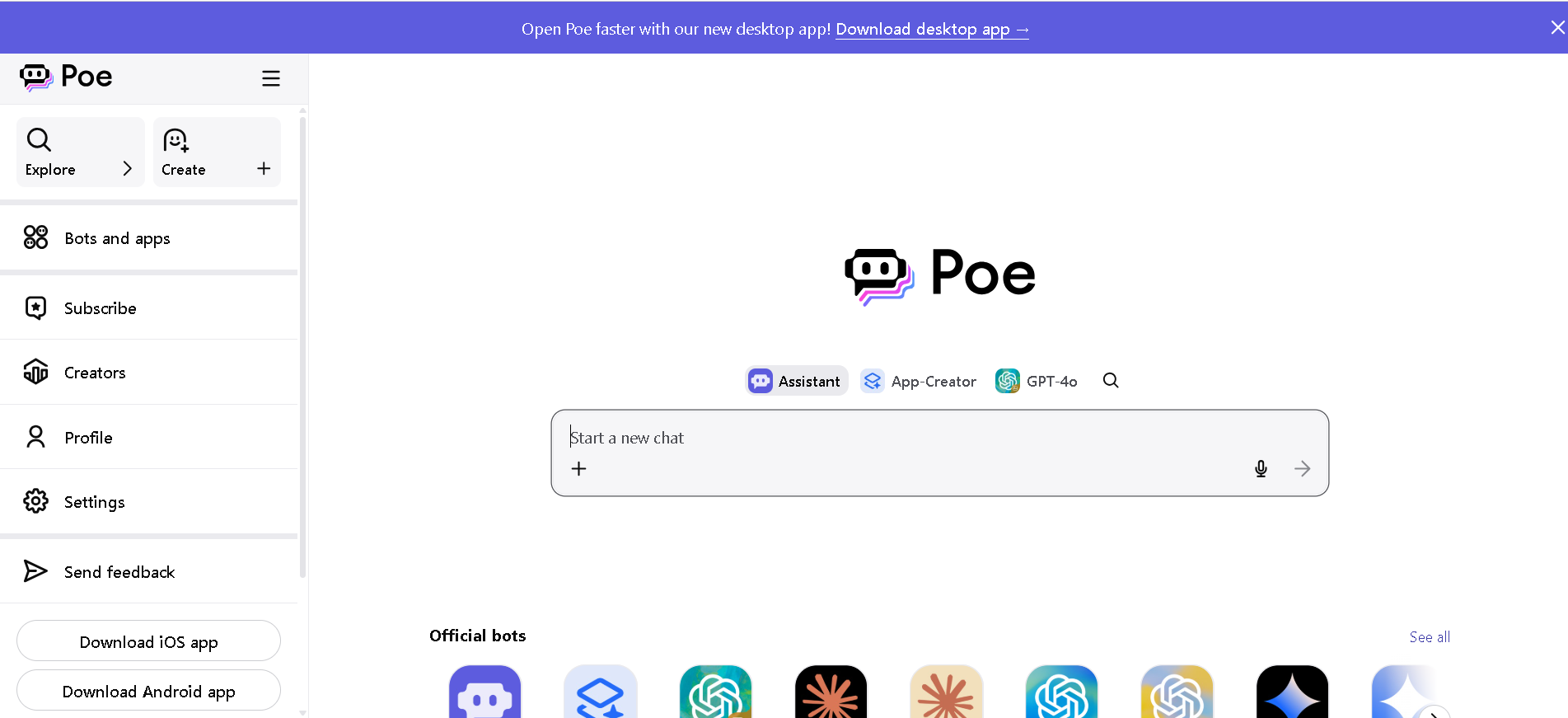
Poe AI
Poe.com is a comprehensive AI chatbot aggregation platform developed by Quora, providing users with unified access to a wide range of conversational AI models from various leading providers, including OpenAI, Anthropic, Google, and Meta. It simplifies the process of discovering and interacting with different AI chatbots and also empowers users to create and monetize their own custom AI bots.

Poe AI
Poe.com is a comprehensive AI chatbot aggregation platform developed by Quora, providing users with unified access to a wide range of conversational AI models from various leading providers, including OpenAI, Anthropic, Google, and Meta. It simplifies the process of discovering and interacting with different AI chatbots and also empowers users to create and monetize their own custom AI bots.

Poe AI
Poe.com is a comprehensive AI chatbot aggregation platform developed by Quora, providing users with unified access to a wide range of conversational AI models from various leading providers, including OpenAI, Anthropic, Google, and Meta. It simplifies the process of discovering and interacting with different AI chatbots and also empowers users to create and monetize their own custom AI bots.

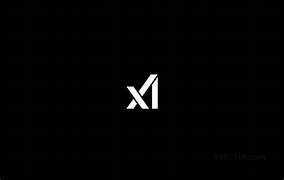
Grok 3
Grok 3 is the latest flagship chatbot by Elon Musk’s xAI, described as "the world’s smartest AI." It was trained on a massive 200,000‑GPU supercomputer and offers tenfold more computing power than Grok 2. Equipped with two reasoning modes—Think and Big Brain—and featuring DeepSearch (a contextual web-and-X research tool), Grok 3 excels in math, science, coding, and truth-seeking tasks—all while offering fast, lively conversational style.


Grok 3
Grok 3 is the latest flagship chatbot by Elon Musk’s xAI, described as "the world’s smartest AI." It was trained on a massive 200,000‑GPU supercomputer and offers tenfold more computing power than Grok 2. Equipped with two reasoning modes—Think and Big Brain—and featuring DeepSearch (a contextual web-and-X research tool), Grok 3 excels in math, science, coding, and truth-seeking tasks—all while offering fast, lively conversational style.


Grok 3
Grok 3 is the latest flagship chatbot by Elon Musk’s xAI, described as "the world’s smartest AI." It was trained on a massive 200,000‑GPU supercomputer and offers tenfold more computing power than Grok 2. Equipped with two reasoning modes—Think and Big Brain—and featuring DeepSearch (a contextual web-and-X research tool), Grok 3 excels in math, science, coding, and truth-seeking tasks—all while offering fast, lively conversational style.
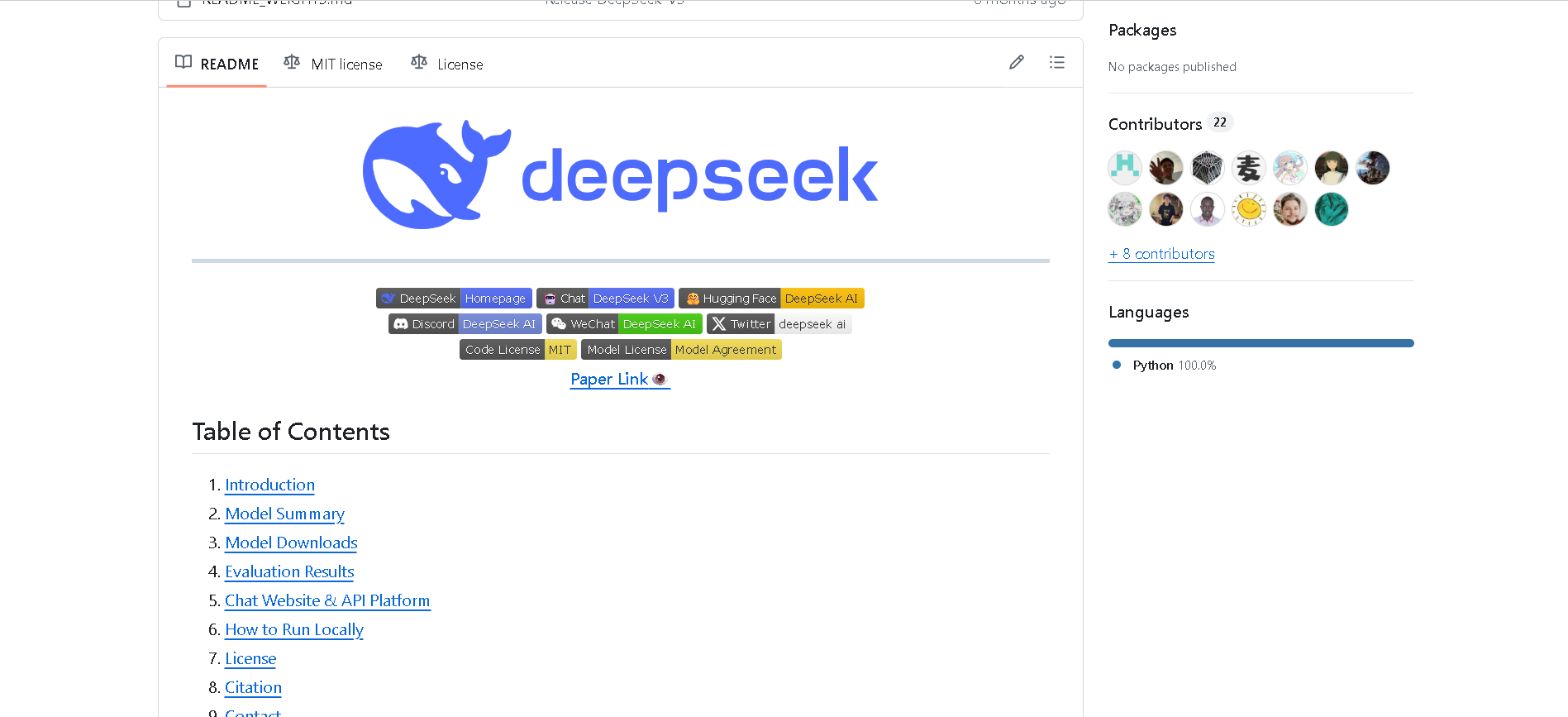
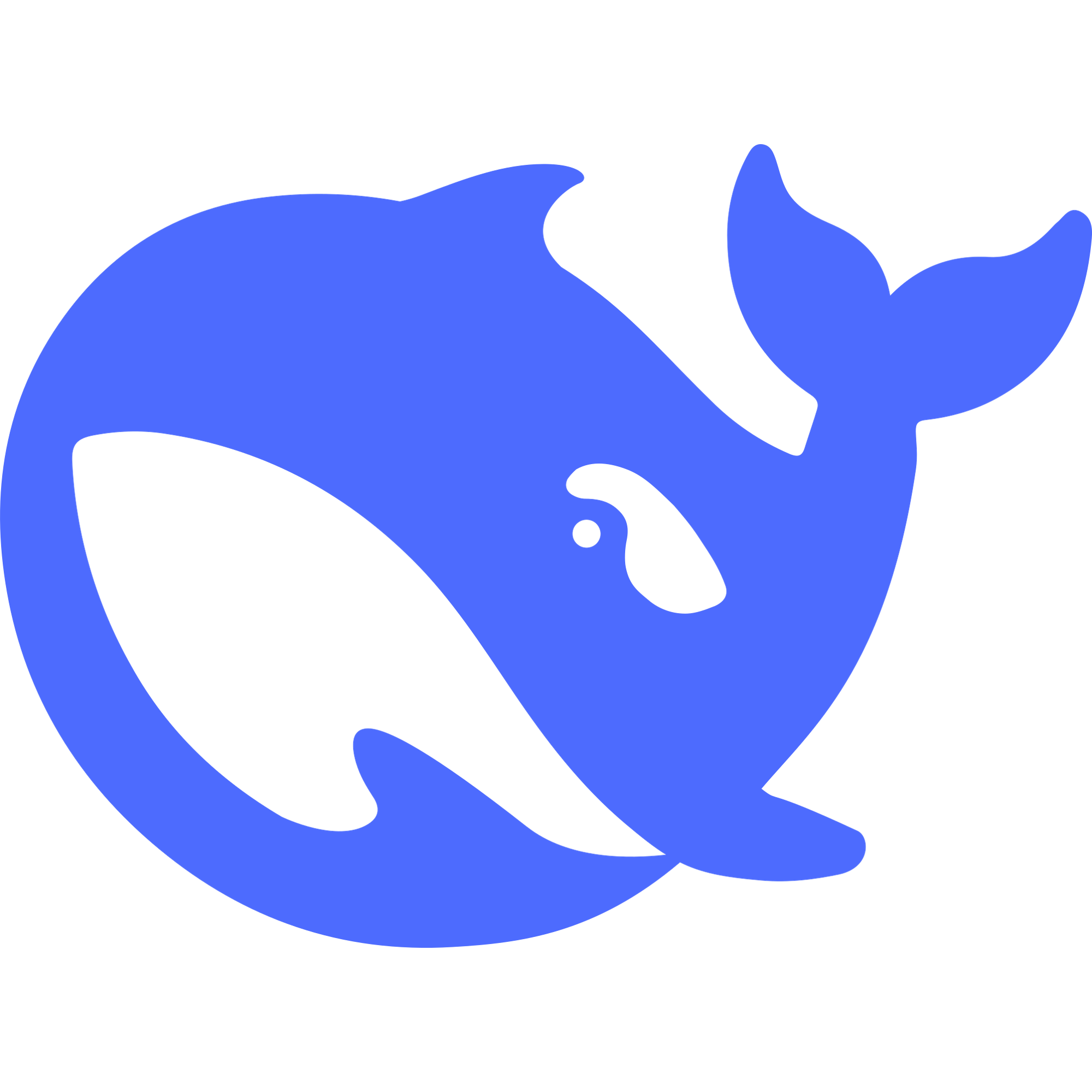
DeepSeek-V3
DeepSeek V3 is the latest flagship Mixture‑of‑Experts (MoE) open‑source AI model from DeepSeek. It features 671 billion total parameters (with ~37 billion activated per token), supports up to 128K context length, and excels across reasoning, code generation, language, and multimodal tasks. On standard benchmarks, it rivals or exceeds proprietary models—including GPT‑4o and Claude 3.5—as a high-performance, cost-efficient alternative.


DeepSeek-V3
DeepSeek V3 is the latest flagship Mixture‑of‑Experts (MoE) open‑source AI model from DeepSeek. It features 671 billion total parameters (with ~37 billion activated per token), supports up to 128K context length, and excels across reasoning, code generation, language, and multimodal tasks. On standard benchmarks, it rivals or exceeds proprietary models—including GPT‑4o and Claude 3.5—as a high-performance, cost-efficient alternative.


DeepSeek-V3
DeepSeek V3 is the latest flagship Mixture‑of‑Experts (MoE) open‑source AI model from DeepSeek. It features 671 billion total parameters (with ~37 billion activated per token), supports up to 128K context length, and excels across reasoning, code generation, language, and multimodal tasks. On standard benchmarks, it rivals or exceeds proprietary models—including GPT‑4o and Claude 3.5—as a high-performance, cost-efficient alternative.
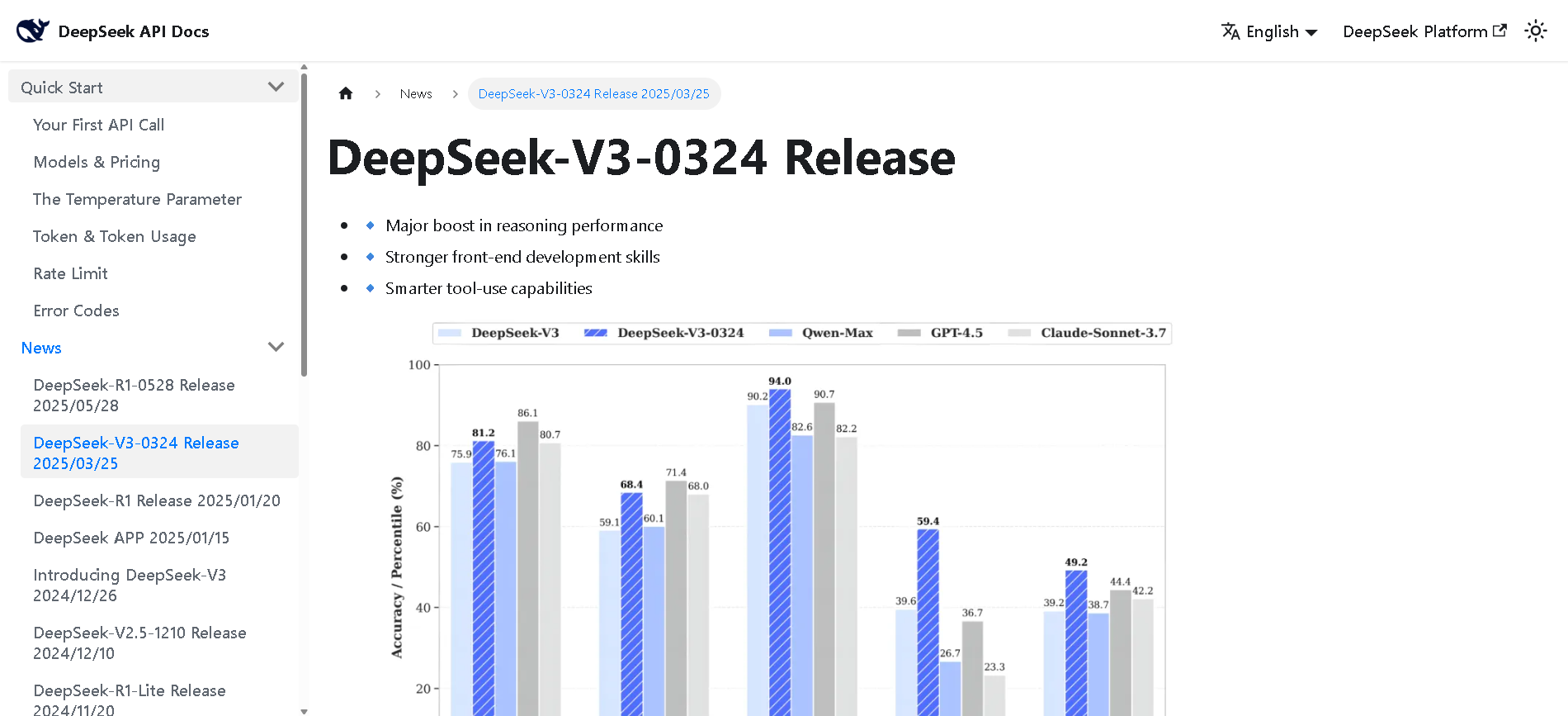
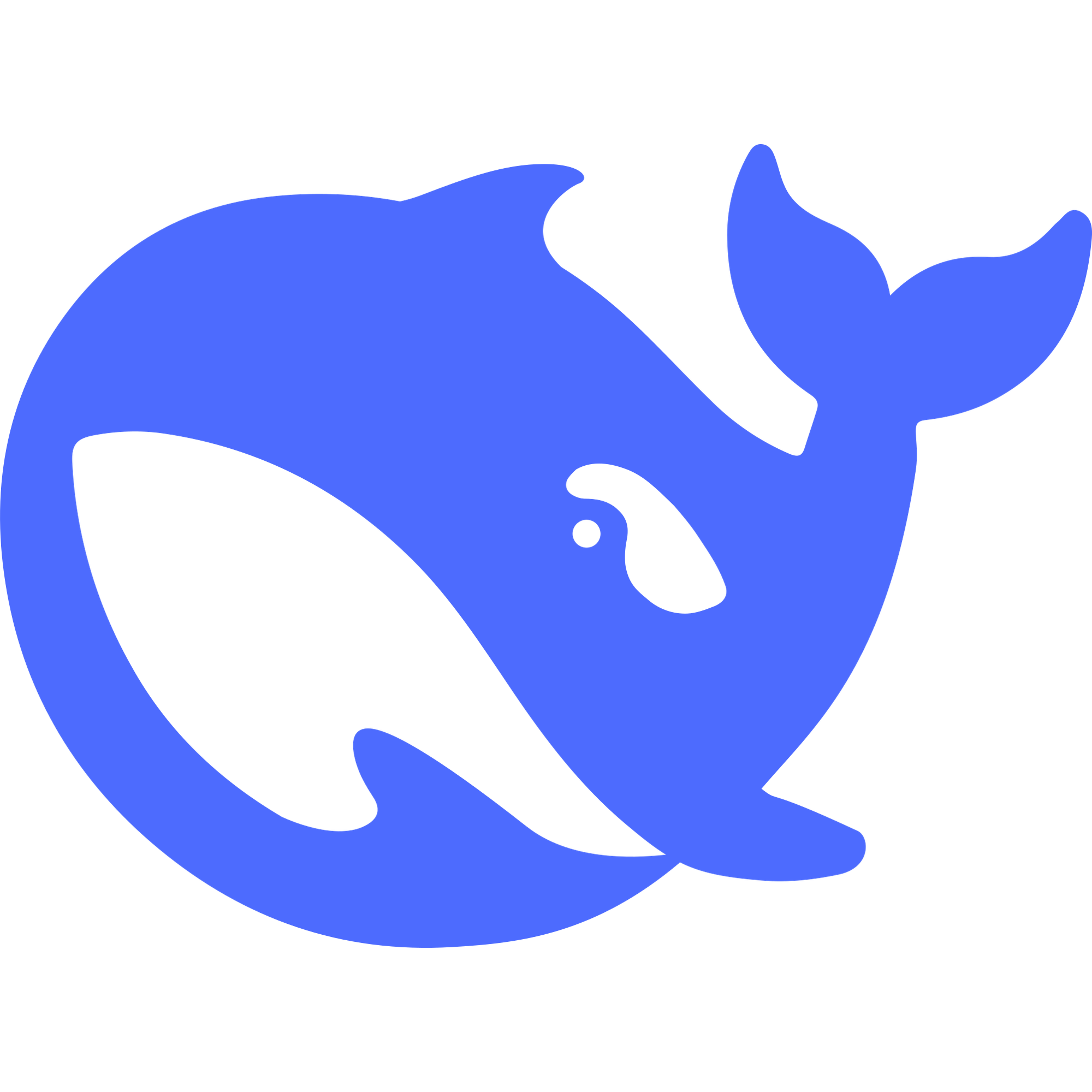
DeepSeek-V3-0324
DeepSeek V3 (0324) is the latest open-source Mixture-of-Experts (MoE) language model from DeepSeek, featuring 671B parameters (37B active per token). Released in March 2025 under the MIT license, it builds on DeepSeek V3 with major enhancements in reasoning, coding, front-end generation, and Chinese proficiency. It maintains cost-efficiency and function-calling support.


DeepSeek-V3-0324
DeepSeek V3 (0324) is the latest open-source Mixture-of-Experts (MoE) language model from DeepSeek, featuring 671B parameters (37B active per token). Released in March 2025 under the MIT license, it builds on DeepSeek V3 with major enhancements in reasoning, coding, front-end generation, and Chinese proficiency. It maintains cost-efficiency and function-calling support.


DeepSeek-V3-0324
DeepSeek V3 (0324) is the latest open-source Mixture-of-Experts (MoE) language model from DeepSeek, featuring 671B parameters (37B active per token). Released in March 2025 under the MIT license, it builds on DeepSeek V3 with major enhancements in reasoning, coding, front-end generation, and Chinese proficiency. It maintains cost-efficiency and function-calling support.
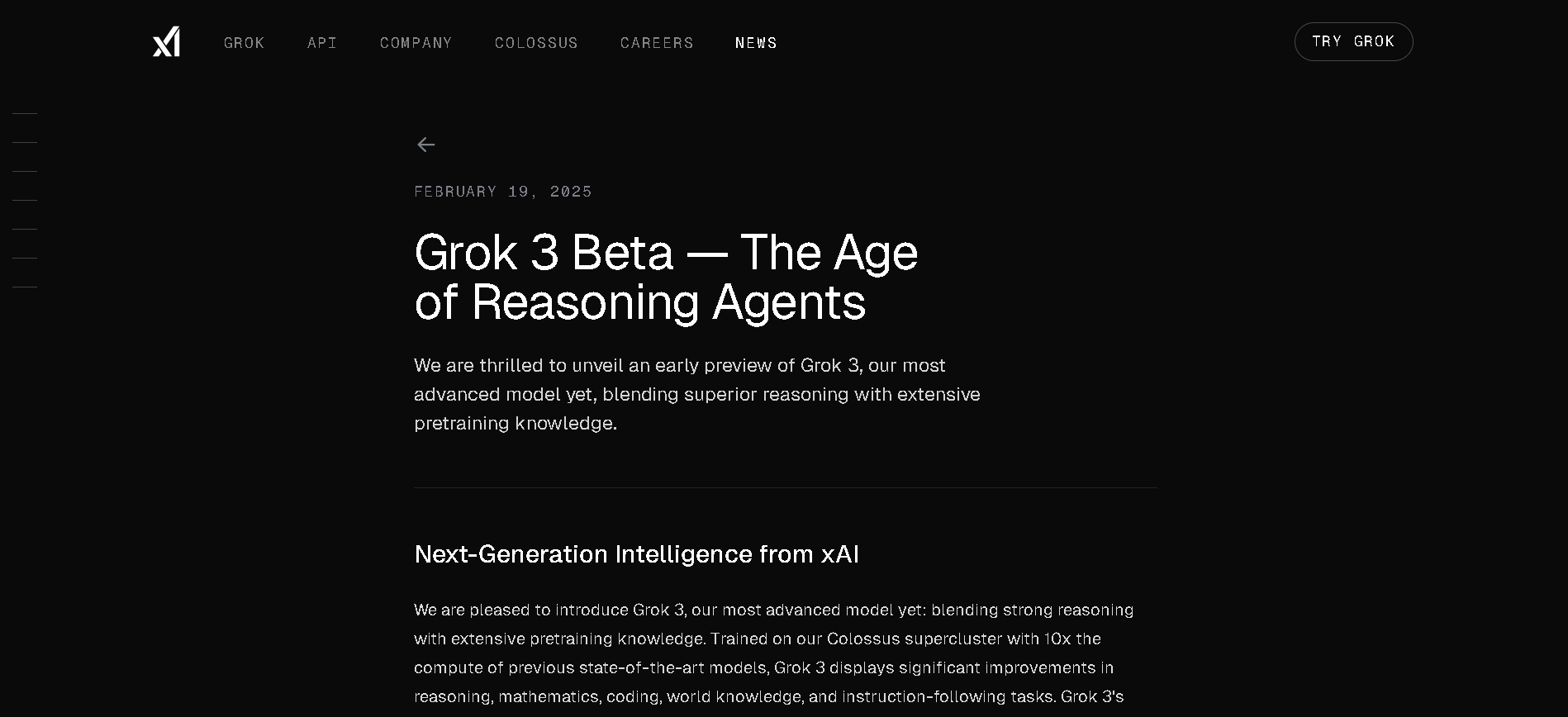
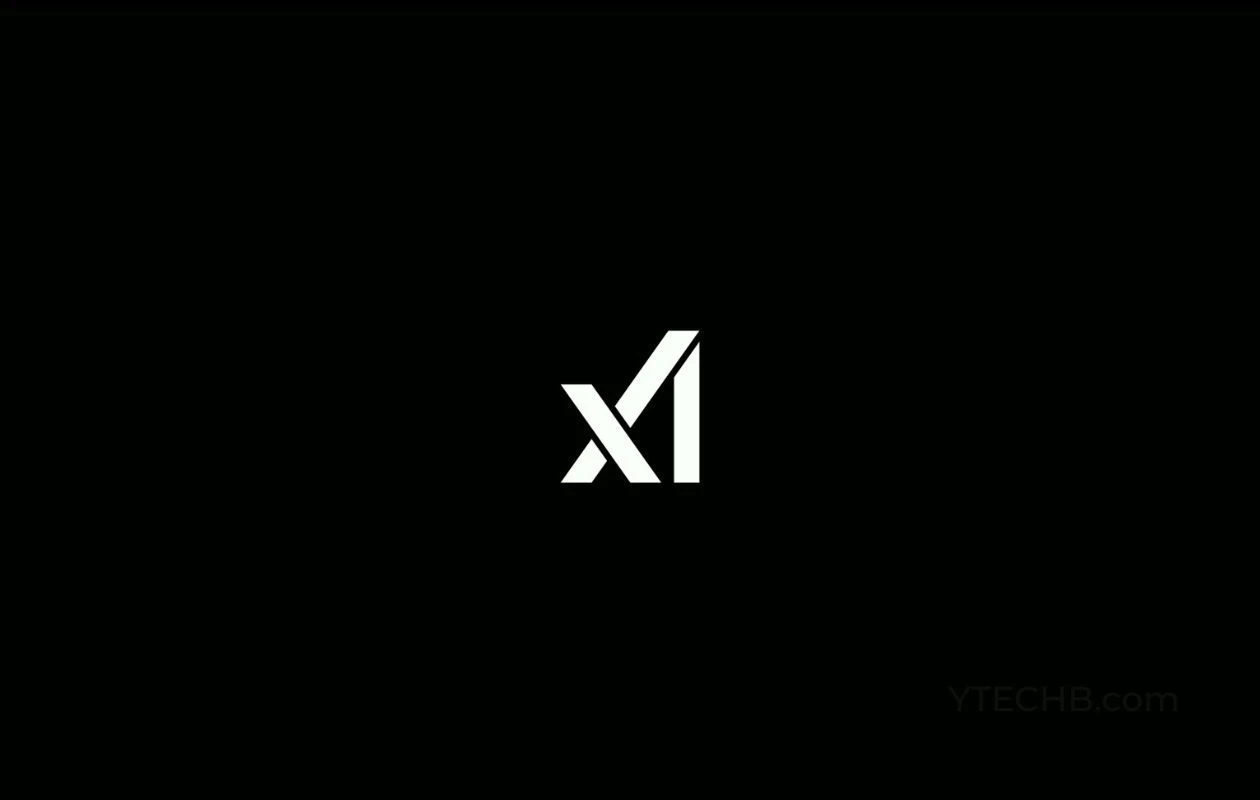
Grok 3 Latest
Grok 3 is xAI’s newest flagship AI chatbot, released on February 17, 2025, running on the massive Colossus supercluster (~200,000 GPUs). It offers elite-level reasoning, chain-of-thought transparency (“Think” mode), advanced “Big Brain” deeper reasoning, multimodal support (text, images), and integrated real-time DeepSearch—positioning it as a top-tier competitor to GPT‑4o, Gemini, Claude, and DeepSeek V3 on benchmarks.


Grok 3 Latest
Grok 3 is xAI’s newest flagship AI chatbot, released on February 17, 2025, running on the massive Colossus supercluster (~200,000 GPUs). It offers elite-level reasoning, chain-of-thought transparency (“Think” mode), advanced “Big Brain” deeper reasoning, multimodal support (text, images), and integrated real-time DeepSearch—positioning it as a top-tier competitor to GPT‑4o, Gemini, Claude, and DeepSeek V3 on benchmarks.


Grok 3 Latest
Grok 3 is xAI’s newest flagship AI chatbot, released on February 17, 2025, running on the massive Colossus supercluster (~200,000 GPUs). It offers elite-level reasoning, chain-of-thought transparency (“Think” mode), advanced “Big Brain” deeper reasoning, multimodal support (text, images), and integrated real-time DeepSearch—positioning it as a top-tier competitor to GPT‑4o, Gemini, Claude, and DeepSeek V3 on benchmarks.
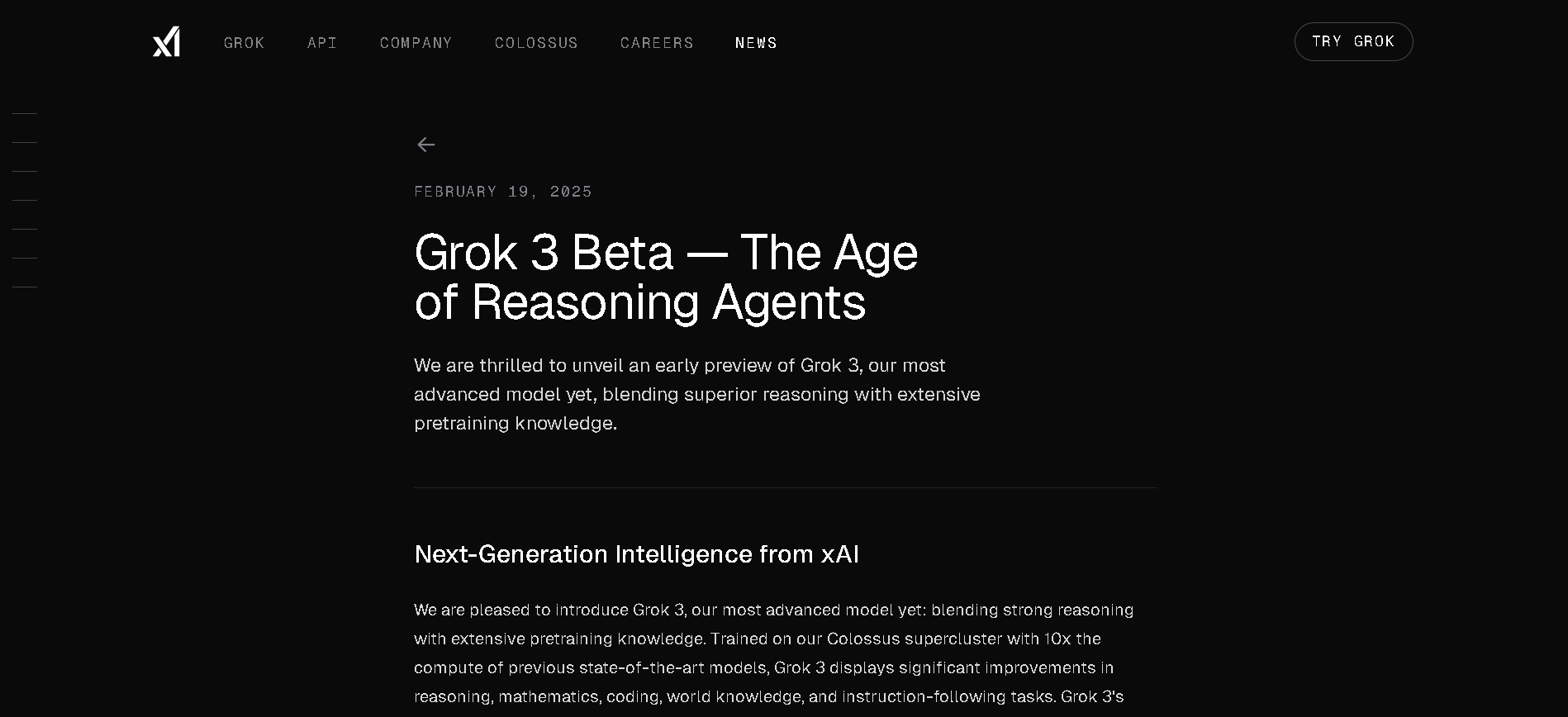
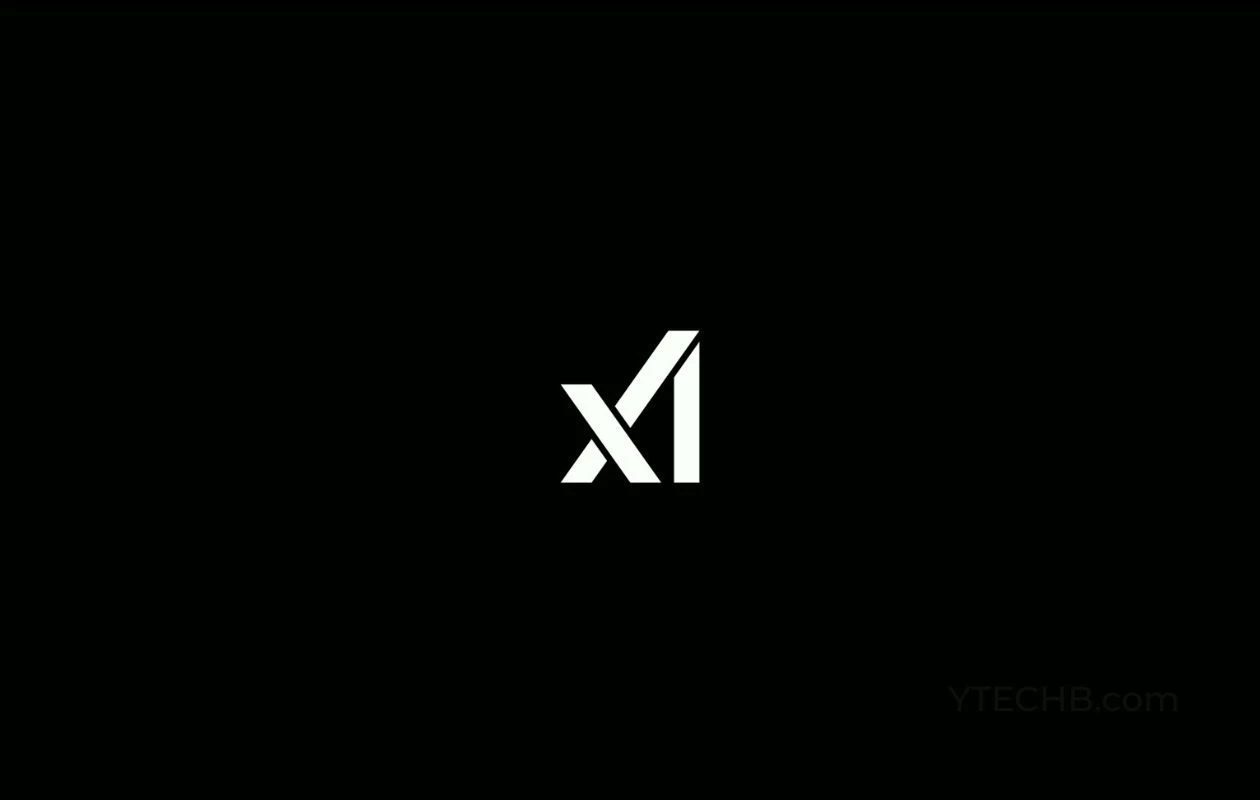
grok-3-fast-latest
Grok 3 Fast is xAI’s speed-optimized variant of their flagship Grok 3 model, offering identical output quality with lower latency. It leverages the same underlying architecture—including multimodal input, chain-of-thought reasoning, and large context—but serves through optimized infrastructure for real-time responsiveness. It supports up to 131,072 tokens of context.


grok-3-fast-latest
Grok 3 Fast is xAI’s speed-optimized variant of their flagship Grok 3 model, offering identical output quality with lower latency. It leverages the same underlying architecture—including multimodal input, chain-of-thought reasoning, and large context—but serves through optimized infrastructure for real-time responsiveness. It supports up to 131,072 tokens of context.


grok-3-fast-latest
Grok 3 Fast is xAI’s speed-optimized variant of their flagship Grok 3 model, offering identical output quality with lower latency. It leverages the same underlying architecture—including multimodal input, chain-of-thought reasoning, and large context—but serves through optimized infrastructure for real-time responsiveness. It supports up to 131,072 tokens of context.
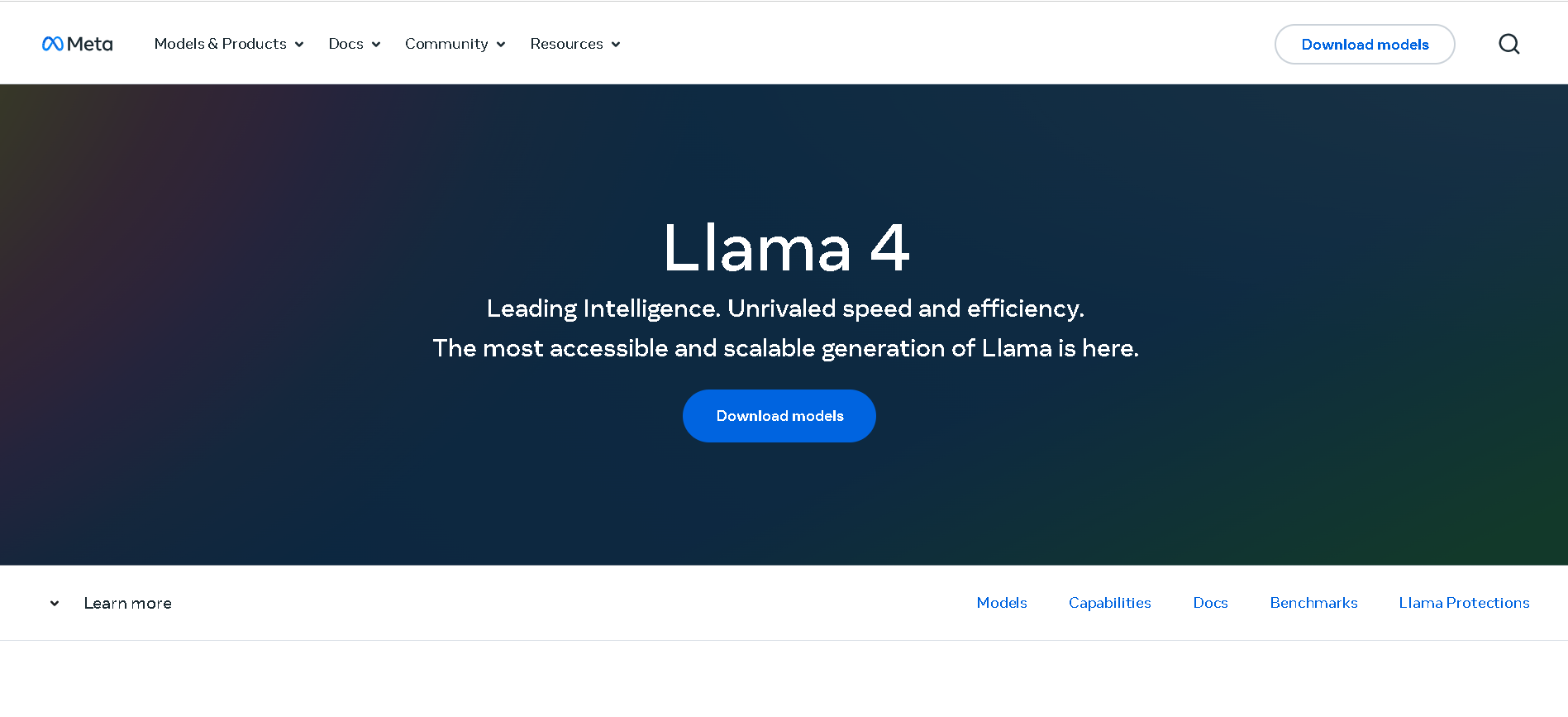

Meta Llama 4 Scout
Llama 4 Scout is Meta’s compact and high-performance entry in the Llama 4 family, released April 5, 2025. Built on a mixture-of-experts (MoE) architecture with 17B active parameters (109B total) and a staggering 10‑million-token context window, it delivers top-tier speed and long-context reasoning while fitting on a single Nvidia H100 GPU. It outperforms models like Google's Gemma 3, Gemini 2.0 Flash‑Lite, and Mistral 3.1 across benchmarks.


Meta Llama 4 Scout
Llama 4 Scout is Meta’s compact and high-performance entry in the Llama 4 family, released April 5, 2025. Built on a mixture-of-experts (MoE) architecture with 17B active parameters (109B total) and a staggering 10‑million-token context window, it delivers top-tier speed and long-context reasoning while fitting on a single Nvidia H100 GPU. It outperforms models like Google's Gemma 3, Gemini 2.0 Flash‑Lite, and Mistral 3.1 across benchmarks.


Meta Llama 4 Scout
Llama 4 Scout is Meta’s compact and high-performance entry in the Llama 4 family, released April 5, 2025. Built on a mixture-of-experts (MoE) architecture with 17B active parameters (109B total) and a staggering 10‑million-token context window, it delivers top-tier speed and long-context reasoning while fitting on a single Nvidia H100 GPU. It outperforms models like Google's Gemma 3, Gemini 2.0 Flash‑Lite, and Mistral 3.1 across benchmarks.
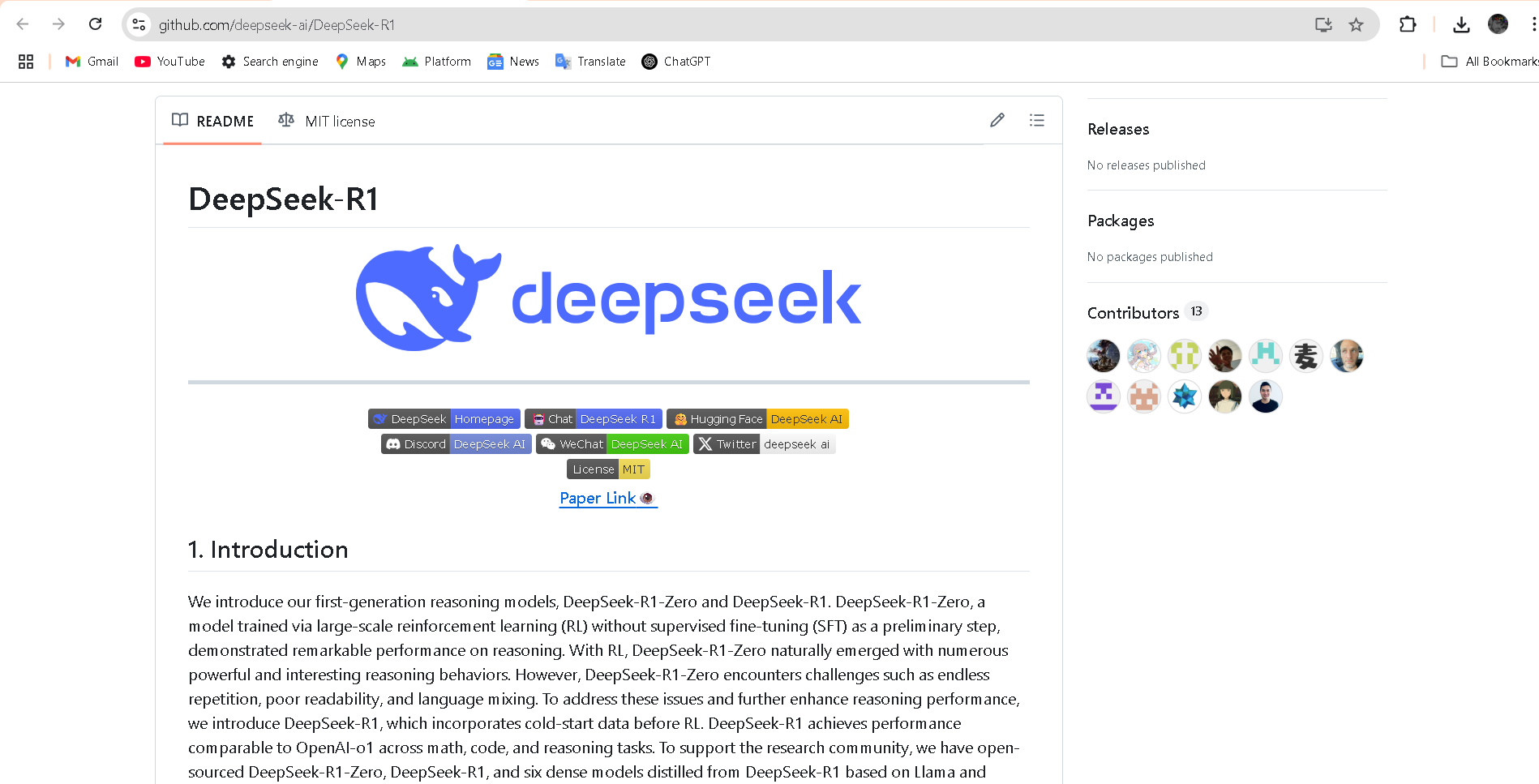
DeepSeek R1 Distill refers to a family of dense, smaller models distilled from DeepSeek’s flagship DeepSeek R1 reasoning model. Released early 2025, these models come in sizes ranging from 1.5B to 70B parameters (e.g., DeepSeek‑R1‑Distill‑Qwen‑32B) and retain powerful reasoning and chain-of-thought abilities in a more efficient architecture. Benchmarks show distilled variants outperform models like OpenAI’s o1‑mini, while remaining open‑source under MIT license.

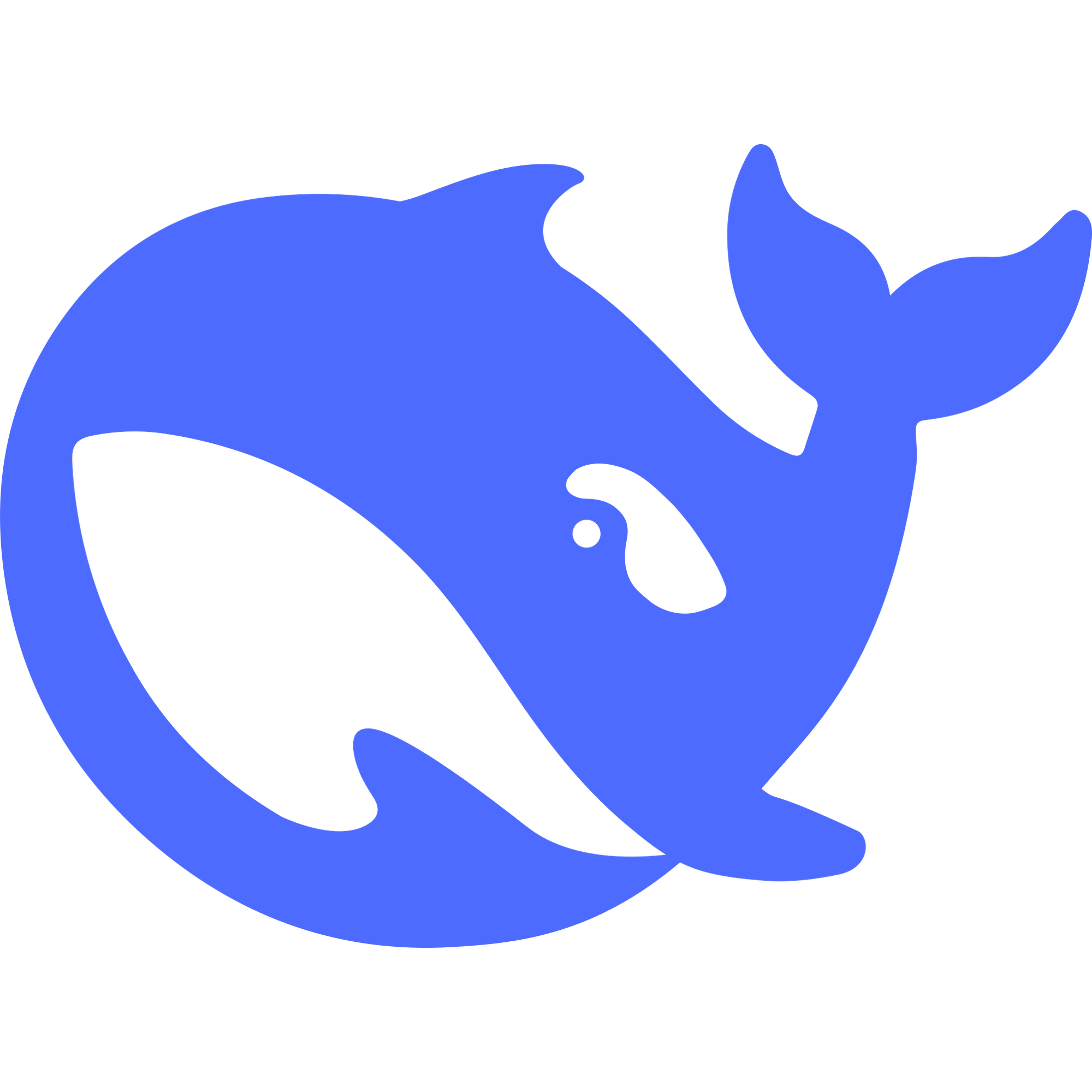
DeepSeek-R1-Distil..
DeepSeek R1 Distill refers to a family of dense, smaller models distilled from DeepSeek’s flagship DeepSeek R1 reasoning model. Released early 2025, these models come in sizes ranging from 1.5B to 70B parameters (e.g., DeepSeek‑R1‑Distill‑Qwen‑32B) and retain powerful reasoning and chain-of-thought abilities in a more efficient architecture. Benchmarks show distilled variants outperform models like OpenAI’s o1‑mini, while remaining open‑source under MIT license.


DeepSeek-R1-Distil..
DeepSeek R1 Distill refers to a family of dense, smaller models distilled from DeepSeek’s flagship DeepSeek R1 reasoning model. Released early 2025, these models come in sizes ranging from 1.5B to 70B parameters (e.g., DeepSeek‑R1‑Distill‑Qwen‑32B) and retain powerful reasoning and chain-of-thought abilities in a more efficient architecture. Benchmarks show distilled variants outperform models like OpenAI’s o1‑mini, while remaining open‑source under MIT license.
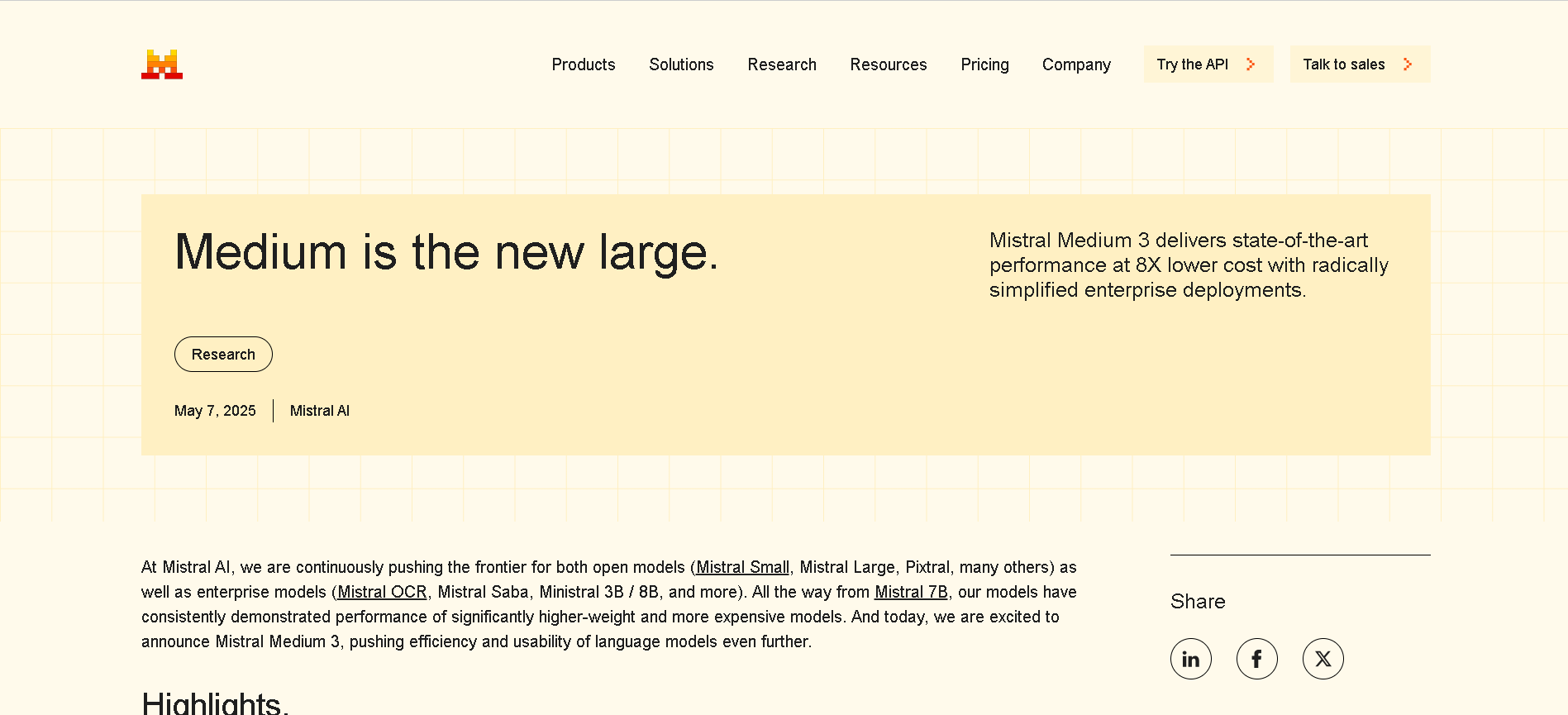
Mistral Medium 3
Mistral Medium 3 is Mistral AI’s new frontier-class multimodal dense model, released May 7, 2025, designed for enterprise use. It delivers state-of-the-art performance—matching or exceeding 90 % of models like Claude Sonnet 3.7—while costing 8× less and offering simplified deployment for coding, STEM reasoning, vision understanding, and long-context workflows up to 128 K tokens.

Mistral Medium 3
Mistral Medium 3 is Mistral AI’s new frontier-class multimodal dense model, released May 7, 2025, designed for enterprise use. It delivers state-of-the-art performance—matching or exceeding 90 % of models like Claude Sonnet 3.7—while costing 8× less and offering simplified deployment for coding, STEM reasoning, vision understanding, and long-context workflows up to 128 K tokens.

Mistral Medium 3
Mistral Medium 3 is Mistral AI’s new frontier-class multimodal dense model, released May 7, 2025, designed for enterprise use. It delivers state-of-the-art performance—matching or exceeding 90 % of models like Claude Sonnet 3.7—while costing 8× less and offering simplified deployment for coding, STEM reasoning, vision understanding, and long-context workflows up to 128 K tokens.

Mistral Small 3.1
Mistral Small 3.1 is the March 17, 2025 update to Mistral AI's open-source 24B-parameter small model. It offers instruction-following, multimodal vision understanding, and an expanded 128K-token context window, delivering performance on par with or better than GPT‑4o Mini, Gemma 3, and Claude 3.5 Haiku—all while maintaining fast inference speeds (~150 tokens/sec) and running on devices like an RTX 4090 or a 32 GB Mac.

Mistral Small 3.1
Mistral Small 3.1 is the March 17, 2025 update to Mistral AI's open-source 24B-parameter small model. It offers instruction-following, multimodal vision understanding, and an expanded 128K-token context window, delivering performance on par with or better than GPT‑4o Mini, Gemma 3, and Claude 3.5 Haiku—all while maintaining fast inference speeds (~150 tokens/sec) and running on devices like an RTX 4090 or a 32 GB Mac.

Mistral Small 3.1
Mistral Small 3.1 is the March 17, 2025 update to Mistral AI's open-source 24B-parameter small model. It offers instruction-following, multimodal vision understanding, and an expanded 128K-token context window, delivering performance on par with or better than GPT‑4o Mini, Gemma 3, and Claude 3.5 Haiku—all while maintaining fast inference speeds (~150 tokens/sec) and running on devices like an RTX 4090 or a 32 GB Mac.
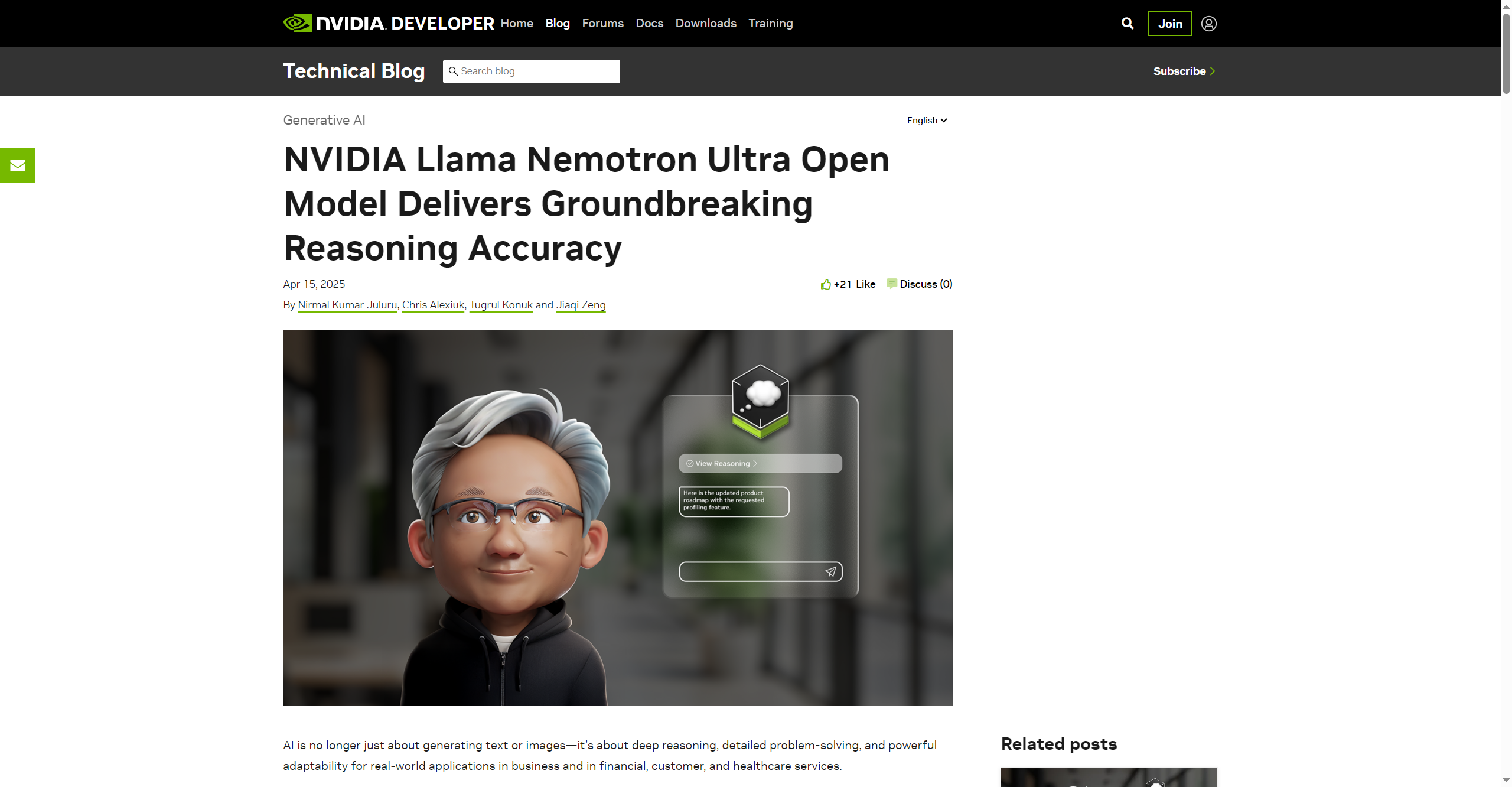
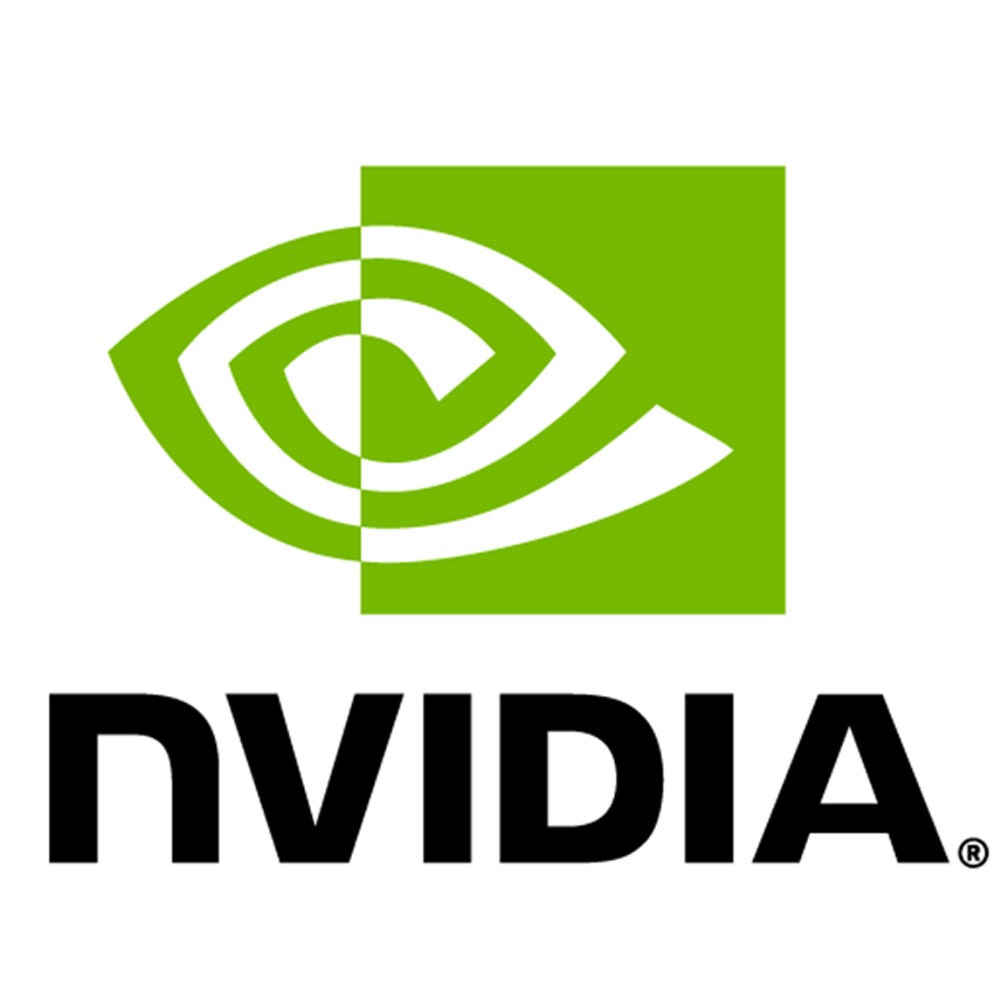
NVidia Llama Nemot..
Llama Nemotron Ultra is NVIDIA’s open-source reasoning AI model engineered for deep problem solving, advanced coding, and scientific analysis across business, enterprise, and research applications. It leads open models in intelligence and reasoning benchmarks, excelling at scientific, mathematical, and programming challenges. Building on Meta Llama 3.1, it is trained for complex, human-aligned chat, agentic workflows, and retrieval-augmented generation. Llama Nemotron Ultra is designed to be efficient, cost-effective, and highly adaptable, available via Hugging Face and as an NVIDIA NIM inference microservice for scalable deployment.


NVidia Llama Nemot..
Llama Nemotron Ultra is NVIDIA’s open-source reasoning AI model engineered for deep problem solving, advanced coding, and scientific analysis across business, enterprise, and research applications. It leads open models in intelligence and reasoning benchmarks, excelling at scientific, mathematical, and programming challenges. Building on Meta Llama 3.1, it is trained for complex, human-aligned chat, agentic workflows, and retrieval-augmented generation. Llama Nemotron Ultra is designed to be efficient, cost-effective, and highly adaptable, available via Hugging Face and as an NVIDIA NIM inference microservice for scalable deployment.


NVidia Llama Nemot..
Llama Nemotron Ultra is NVIDIA’s open-source reasoning AI model engineered for deep problem solving, advanced coding, and scientific analysis across business, enterprise, and research applications. It leads open models in intelligence and reasoning benchmarks, excelling at scientific, mathematical, and programming challenges. Building on Meta Llama 3.1, it is trained for complex, human-aligned chat, agentic workflows, and retrieval-augmented generation. Llama Nemotron Ultra is designed to be efficient, cost-effective, and highly adaptable, available via Hugging Face and as an NVIDIA NIM inference microservice for scalable deployment.
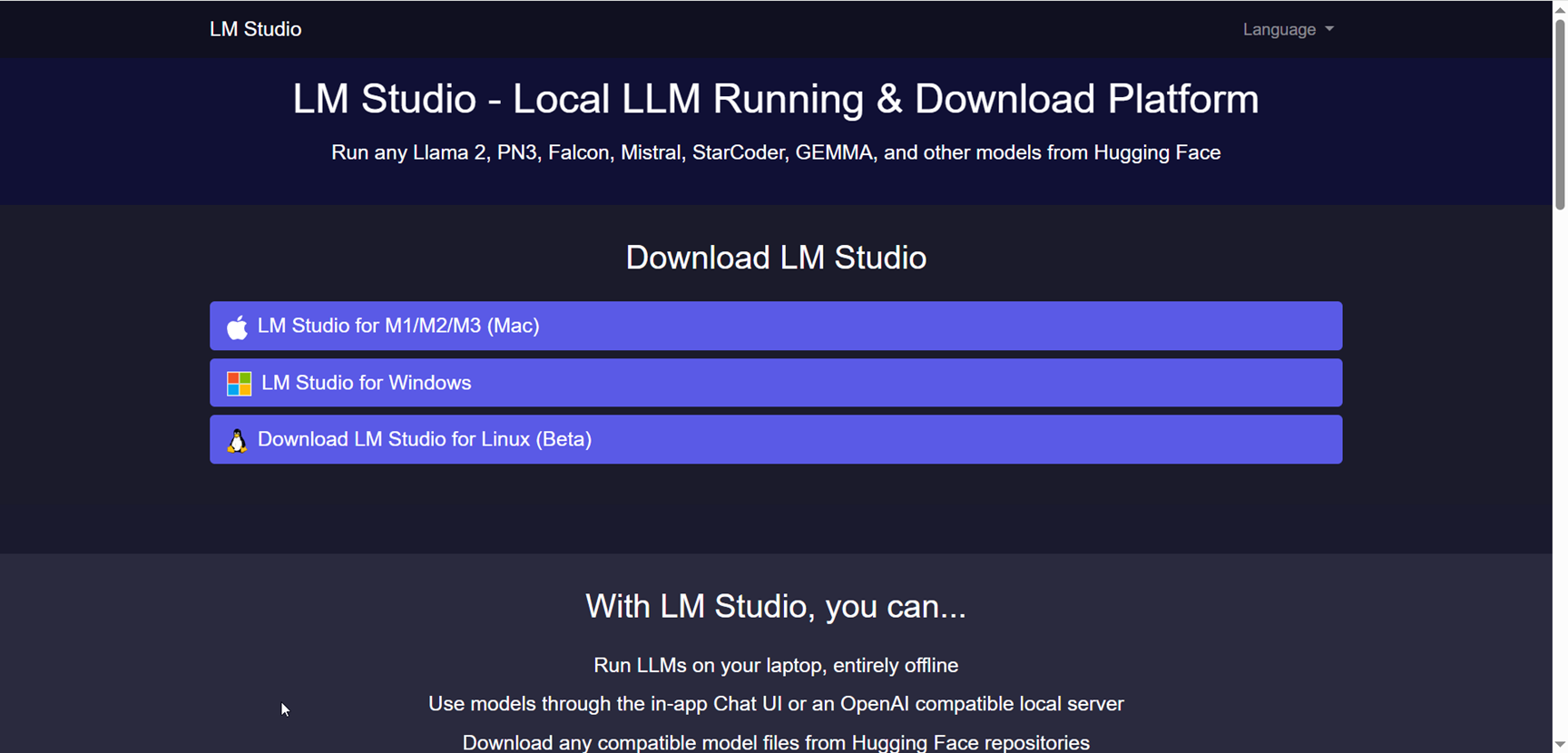
LM Studio
LM Studio is a local large language model (LLM) platform that enables users to run and download powerful AI language models like LLaMa, MPT, and Gemma directly on their own computers. This platform supports Mac, Windows, and Linux operating systems, providing flexibility to users across different devices. LM Studio focuses on privacy and control by allowing users to work with AI models locally without relying on cloud-based services, ensuring data stays on the user’s device. It offers an easy-to-install interface with step-by-step guidance for setup, facilitating access to advanced AI capabilities for developers, researchers, and AI enthusiasts without requiring an internet connection.

LM Studio
LM Studio is a local large language model (LLM) platform that enables users to run and download powerful AI language models like LLaMa, MPT, and Gemma directly on their own computers. This platform supports Mac, Windows, and Linux operating systems, providing flexibility to users across different devices. LM Studio focuses on privacy and control by allowing users to work with AI models locally without relying on cloud-based services, ensuring data stays on the user’s device. It offers an easy-to-install interface with step-by-step guidance for setup, facilitating access to advanced AI capabilities for developers, researchers, and AI enthusiasts without requiring an internet connection.

LM Studio
LM Studio is a local large language model (LLM) platform that enables users to run and download powerful AI language models like LLaMa, MPT, and Gemma directly on their own computers. This platform supports Mac, Windows, and Linux operating systems, providing flexibility to users across different devices. LM Studio focuses on privacy and control by allowing users to work with AI models locally without relying on cloud-based services, ensuring data stays on the user’s device. It offers an easy-to-install interface with step-by-step guidance for setup, facilitating access to advanced AI capabilities for developers, researchers, and AI enthusiasts without requiring an internet connection.
Editorial Note
This page was researched and written by the ATB Editorial Team. Our team researches each AI tool by reviewing its official website, testing features, exploring real use cases, and considering user feedback. Every page is fact-checked and regularly updated to ensure the information stays accurate, neutral, and useful for our readers.
If you have any suggestions or questions, email us at hello@aitoolbook.ai
